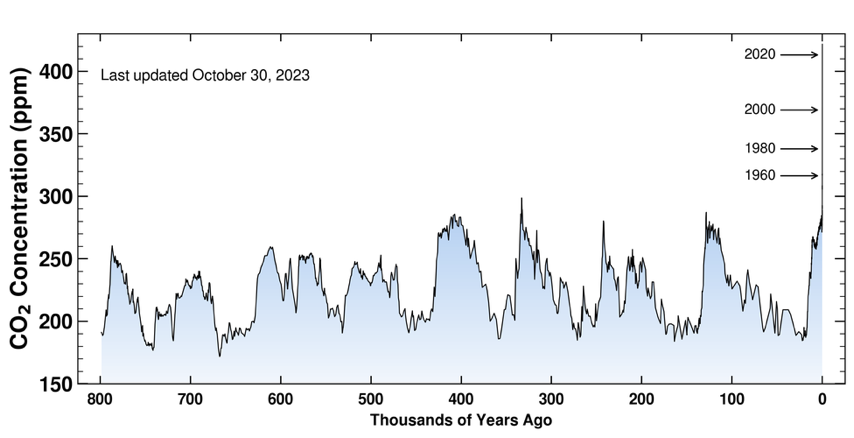The catastrophic summer of 2023

Is what we experienced in the Mediterranean last summer really so unusual? The answer is yes. The warmth of the past decades is outside the "normal" climate fluctuations. With the corresponding consequences: Hailstorms, floods, forest fires.
Of the countless pieces of evidence that prove climate change and the reasons for it, the CO2 curve of ice cores from Antarctica is perhaps the most impressive. If you drill into the Antarctic ice sheet, ice layer by ice layer, kilometer by kilometer, you can look 800,000 years into the past. It turns out that between ice ages and warm periods, the CO2 concentration in the air typically fluctuated between 170 ppm and 270ppm. In the course of 800,000 years up to the 20th century, the limit of 300ppm was not exceeded once - until the 50 years of the last century. Since then, the increase has been dramatic. The CO2 value on October 30, 2023 at Mauna Loa in the Pacific (as well as at Sonnblick in the Hohe Tauern) is 418ppm.

CO2 content of the atmosphere over the past 800,000 years. The Keeling Curve, UC San Diego
Does that have an impact? Of course.
Summers in particular have warmed up gradually but significantly. The Austrian average summer temperatures - we have been measuring temperatures in Austria continuously since 1767 - speak volumes: we have not experienced a cold summer for around 40 years (based on the 30-year average from 1961-1990). Summers like back then no longer exist.






